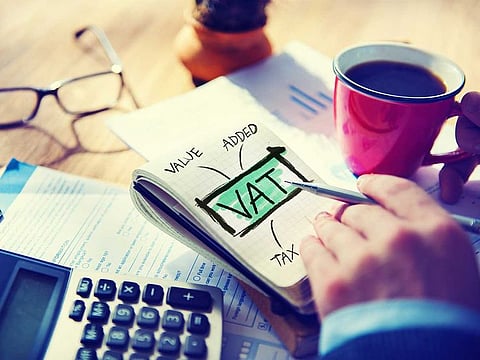Subtle changes can help UAE businesses on cashflow
Even a day’s difference on when VAT is triggered could end up helping

The COVID-19 has had a significant impact on liquidity and cash positions – particularly for small and medium businesses. In the current economic scenario, most businesses are expecting cashflow issues to manifest within the next couple of months, if not already.
While there can be several issues from an indirect tax perspective during the current crisis, there are mechanics to help businesses optimize. Using these, the finance function can deliver tangible value to the organisation. Cashflow positions can be optimized by being aware of nuances in VAT laws and how they apply to commercial arrangements.
All in the timing
From an output perspective, organizations should look at the time gap between when they need to report and pay VAT on sales and income and when they receive payment from customers. It could be that this timing can be optimised.
In most situations, the tax point for reporting VAT is determined by the date of the issuing invoice. This is the time to re-examine commercial arrangements to see if any changes are possible to the current process. Sometimes an invoice is issued when the price is still under discussion because it needs to be accepted by the customer, quality needs to be validated, or quantity confirmed.
Such an invoice triggers the tax point and VAT has to then be reported and paid, although there is no certainty that the customer will accept the invoice and pay.
Delay the triggering
As an alternative, businesses can first issue a document to a customer, which is not yet an invoice for VAT purposes and therefore does not yet trigger the VAT taxing point (the date of supply). It may then be argued that this is not an invoice and does not evidence an obligation to make a payment. By issuing such a claim or a notice of intended invoicing, which serves as a discussion document for pricing and quantity, the taxing point can thus be deferred, and a cashflow gap between VAT liability and customer payment can be significantly reduced.
Fixing liability point
Another technique for reducing the gap is to review the date at which VAT liability is created. For instance, if a monthly VAT taxpayer issues an invoice to customer on April 30, VAT needs to be reported and paid on that sale in the April return, due end of May. If that invoice is delayed by one day, to May 1, the sale is included in May VAT returns, to be reported and paid at the end of June.
By delaying invoicing by one day, the business achieves a cashflow deferral of one month.
From an accounting point of view, not issuing an invoice does not change revenue recognition. By delaying the paperwork by one day, a one-month delay on VAT recognition is achieved, and it could be even longer for a quarterly taxpayer.
Bad debt relief
In the COVID-19 affected business landscape, defaulting on payments and bankruptcy can be expected. An organization can also claim bad debt relief if output tax has been paid on invoices issued in the past. If the debt has gone bad, written off or a price reduction has been negotiated with the customer, under conditions, some of the initially paid tax can be claimed back.
Beyond issuing invoices, another point to examine is “consideration”. Under most VAT laws, receipt of a deposit or security deposit payment is not necessarily a consideration and therefore does not trigger the date of supply. It is worth revisiting contracts to determine whether payments received are an initial deposit against securing future performance (and not payment received) and therefore do not act as a trigger point.
VAT recovery
Output tax is half of the equation. Another important aspect is the extent to which an organization is entitled to deduct or recover input tax or VAT on costs. Often, in large organizations, enterprise resource planning (ERP) systems register invoices as they arrive, but do not necessarily process them as part of the accounts payable (AP), causing a mismatch in dates.
It may be worth examining when AP invoices are received and registered on the ERP system, as opposed to the date when they are actually claimed from a VAT point of view. The shorter the time lag, the better it is for cashflow.
VAT reporting period
In the current situation, when the outlook on revenues may be bleak, organizations could consider switching from monthly to quarterly returns. On the other hand, businesses that report VAT quarterly but are in refund position (such as exporters) could consider switching to monthly returns to effectuate their VAT refunds on a more regular basis.
In the UAE, a different tax period may be availed if the organization can demonstrate a reduced compliance burden. Businesses can apply themselves or with a help of a tax agent.
Organizations would do well to look at these key elements as opportunities to improve cashflow positions as a business priority – at least in the near term. Unexpected crises underscore why it is important to anticipate and manage competing cashflow demands. Robust cash management and forecasting procedures will decide whether businesses emerge intact on the other side.
This is the time to revise cashflow, working capital management and inventory forecasts, alongside supply and demand predictions.
- Julie Lere Pland is Director - Tax, KPMG Lower Gulf.
Sign up for the Daily Briefing
Get the latest news and updates straight to your inbox





